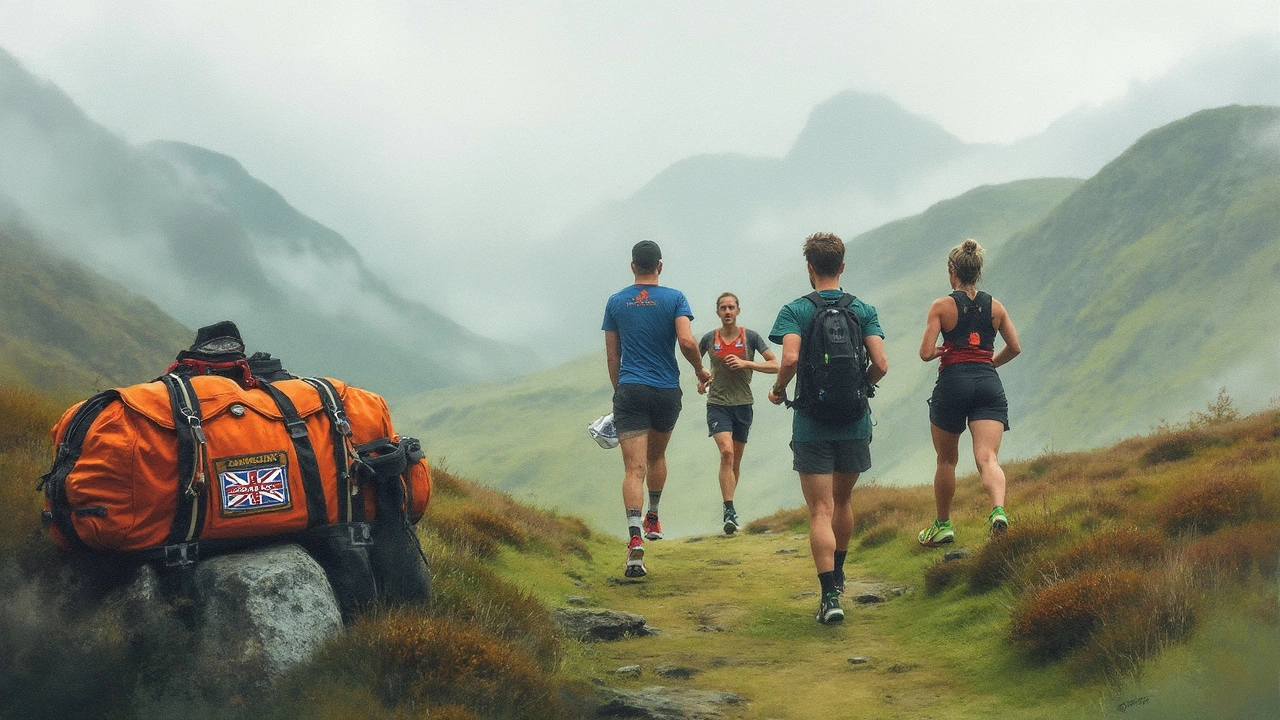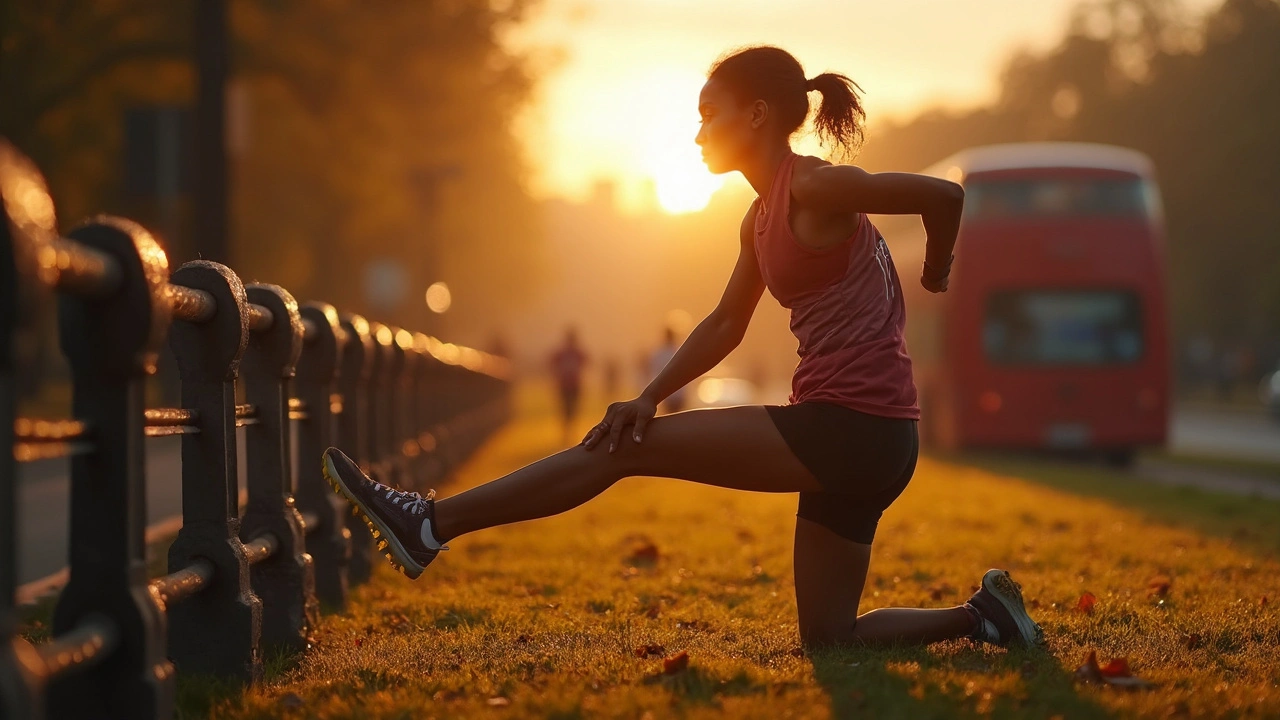You don’t book a massage just to drift off under warm towels-you want to move better, bounce back faster, and keep training. Here’s the truth: used right, sports massage can shave down soreness, improve range of motion, and help you stick to your plan. It won’t add 20 pounds to your squat or cure a torn hamstring, but it can be the difference between grinding through stiff legs and showing up ready. I’ll show you what it actually does, when to use it, and how to get real results without wasting time or money.
TL;DR
- Massage has small-to-moderate effects on soreness and range of motion; performance boosts are subtle and short-lived. Good for staying consistent.
- Use light, quick work before events; deeper work 24-72 hours away from key sessions; short, targeted work during rehab-always coordinated with your coach or clinician.
- Avoid deep pressure on fresh injuries, active infections, or suspected blood clots. If in doubt, get cleared by a medical pro.
- DIY tools (foam roller, ball, percussive gun) help in between pro sessions. Think 5-15 minutes, specific, not random rolling.
- Pair massage with sleep, protein, hydration, and smart training. Alone, it’s not a magic fix; together, it moves the needle.
What it really does (and doesn’t): the body-level effects you can count on
Here’s the headline: massage helps you feel and move better by changing how your nervous system interprets tension and pain, and by improving tissue glide and fluid exchange. You walk out looser not because someone “smashed” your muscles into submission, but because your body dialed down protective stiffness.
Let’s break the big claims into what holds up and what doesn’t.
- DOMS (delayed onset muscle soreness): Multiple reviews (including a 2016 meta-analysis in Sports Medicine and follow-ups through 2020) report small-to-moderate reductions in soreness within 24-72 hours after a massage. Translation: you’ll likely feel better sooner, but it won’t erase a brutal leg day.
- Range of motion: Short-term mobility gains are common. Most of that comes from increased stretch tolerance, not permanent changes in muscle length. Studies in journals like the Journal of Strength and Conditioning Research show small but meaningful ROM bumps after targeted work.
- Strength, speed, and power: The acute performance boost is usually tiny and short-lived. Deep, heavy work right before a max-effort session can even blunt power. Light, rhythmic pre-event work is the better play.
- Blood flow and recovery: Massage boosts local circulation and lymphatic movement for a short window. It won’t “flush” lactic acid (that’s not how lactate clears), but it can ease that heavy, congested feeling post-training.
- Nervous system: Expect a shift toward parasympathetic (rest-and-digest) tone-lower perceived stress, easier breathing, heart rate down a bit. This is part of why your sleep can be better after a smart session.
- Injury prevention: On its own, massage doesn’t reliably prevent injuries. As part of a plan with strength, mobility, and workload management, it helps you keep tissues feeling workable, which supports consistent training.
Myths worth dropping:
- “It breaks up scar tissue.” Manual pressure won’t chisel out scar tissue like a sculptor. What you’re feeling is improved glide, reduced guarding, and better tolerance to stretch.
- “More pressure is better.” Past a certain point, you trigger guarding and next-day fatigue. A pain scale sweet spot is about 4-6 out of 10-intense but breathable.
- “If I get a massage, I can skip recovery.” No chance. Sleep, protein, hydration, and load management do most of the heavy lifting. Massage complements them.
Credibility check: The American College of Sports Medicine and the National Athletic Trainers’ Association both position manual therapy as an adjunct-useful when integrated with training and medical care. Peer-reviewed meta-analyses consistently land on “small benefits for soreness and range of motion, mixed for performance,” which is exactly how athletes experience it in the real world.

Timing, frequency, and protocols: make it fit your season, not the other way around
Great massages badly timed can sabotage your day. Here’s a practical way to slot sessions so you get the upside without the performance dip.
Decision rules you can use right now
- Within 0-24 hours of a key competition or PR attempt: Keep it light and short (10-15 minutes). Focus on rhythm, warmth, and activation. Avoid deep work on prime movers.
- 24-72 hours before a key day: This is your window for deeper maintenance (45-60 minutes). Clear hotspots, improve tissue glide, and settle down stubborn trigger points.
- Right after hard training or races: Go for gentle, general work (20-30 minutes). You’re nudging recovery, not grinding tissue.
- In a heavy block: Aim for weekly or biweekly maintenance. Short, targeted sessions beat occasional marathon massages.
- In rehab: Work under guidance. Short, precise sessions (10-20 minutes) around-not always on-the injured area plus movement-based drills.
How often?
Think in cycles. During peak load weeks, once per week is common for field and court athletes; endurance athletes may stack a short post-long-session flush and a midweek tune-up. In taper weeks, do your last deeper session 3-4 days out, then a light primer the day before.
| Scenario | Timing | Duration | Intensity | Main Techniques | Notes |
|---|---|---|---|---|---|
| Pre-event (same day) | 60-20 min before | 10-15 min | Light | Effleurage, compression, quick shakes | Avoid deep work on prime movers; pair with dynamic warm-up |
| Pre-event (1-3 days out) | 72-24 hours out | 45-60 min | Moderate-deep | Petrissage, cross-fiber friction, trigger point | Good time to clear hotspots before taper |
| Post-event flush | 0-24 hours after | 20-30 min | Light-moderate | Rhythmic strokes, assisted breathing, gentle stretching | Aim for comfort; don’t chase pain |
| Heavy training block | Weekly or biweekly | 30-60 min | Moderate | Mix of tissue work + joint mobilizations (if trained) | Short, focused sessions maintain momentum |
| Rehab (with clinician) | As prescribed | 10-20 min | Light-moderate | Trigger point, pin-and-stretch, lymphatic techniques | Coordinate with loading plan and symptom response |
Real-world examples
- Marathoner, race week: Deep-ish session Tuesday (60 min), rest + easy miles Wed-Thu, light 15-min primer Saturday morning, race Sunday. Post-race gentle flush Monday.
- Powerlifter before meet: Last deep work 4-5 days out on hips, T-spine, pecs. Day-before: 10-min light primer, no heavy pressure on posterior chain.
- Soccer in a congested schedule: 20-min light flush within 24 hours after matches, 30-min targeted tune-up midweek, focus calves/adductors/hip flexors.
- CrossFit during a volume cycle: Weekly 45-min maintenance on quads, lats, forearms; 10-min rolling after benchmark WODs.
DIY between pro sessions (simple, effective, not time-sucking)
- Pick the goal. Sore quads? Tight calves? Choose one or two areas, tops.
- 2-5 minutes per spot. Slow passes on a foam roller or a ball. Breathe out on hotspots. Pain cap: 6/10.
- Move it. After pressure, add 5-8 controlled reps through range (e.g., ankle rocks after calf work).
- Finish with function. One set of the thing you care about (light goblet squat, banded row) to lock in the new range.
Percussive guns? Use 30-60 seconds per muscle, light to moderate, before lifting or after runs. Good for quads, calves, traps. Keep it off bony areas and don’t use on acute injuries.

Techniques, safety, and execution: how to get professional results without guesswork
Not all pressure is created equal. Here’s what you’ll feel on the table and when each move earns its keep.
Common techniques, translated
- Effleurage: Long, gliding strokes to warm tissue and calm the nervous system. Great at the start or end.
- Petrissage (kneading): Lifts and squeezes muscle to improve fluid movement and glide. Good for larger muscles.
- Compression: Direct pressure, often rhythmic. Useful before activation or to settle a sensitive spot.
- Cross-fiber friction: Short, perpendicular strokes over tendons or dense tissue. Use sparingly; aim for 30-90 seconds.
- Trigger point therapy: Focused pressure on a tender nodule within a taut band. Breathe; release often comes in 30-60 seconds.
- Myofascial release: Slower, sustained pressure. Feels sticky at first, then melts as tissue accommodates.
- PNF/contract-relax: Gentle contractions followed by stretch. Quick ROM gains when done well.
- Pin-and-stretch: Trap and lengthen a muscle under pressure. Great for hip flexors, lats, forearms.
What a smart session looks like
- Clear goal: “Prep for tomorrow’s intervals,” “Unlock hip rotation,” or “Ease post-match soreness.” Vague goals lead to vague results.
- Assessment: Quick movement check-what’s stiff, what’s sore, what changes after one pass?
- Dosage control: Pain 4-6/10. If you’re bracing hard or holding your breath, it’s too much.
- Re-test: After working a hotspot, stand up, squat, hinge, or reach; confirm the change.
- Homework: One easy drill to keep gains (e.g., 2 sets of 8-10 Cossack squats after adductor work).
Safety first: when to skip or modify
- Suspected blood clot (DVT), unexplained swelling, or chest pain-medical clearance first.
- Fever, active infection, contagious skin issues-reschedule.
- Open wounds, recent fractures, fresh sprains/strains (first 48-72 hours)-avoid deep work on the area.
- Cancer under treatment, bleeding disorders, anticoagulants-get your oncologist/physician’s guidance and use gentle techniques.
- Pregnancy-choose a therapist trained in prenatal modifications.
- Severe varicose veins or uncontrolled hypertension-use light, non-compressive work and monitor response.
How to choose a therapist (fast checklist)
- Licensed, insured, and experienced with athletes in your sport.
- Asks about your training plan and recent loads before touching a muscle.
- Can explain what they’re doing and why in normal words.
- Respects dosage-no bragging about “no pain, no gain.”
- Collaborates with your coach or physio when needed.
Pre- and post-session checklist
- Before: Hydrate, eat something light 60-90 minutes prior, and skip alcohol. If it’s race day, keep it brief and light.
- During: Breathe in through the nose, out through the mouth. Say something if pain climbs past 6/10.
- After: Easy walk 5-10 minutes, drink water, eat protein + carbs, and avoid testing max strength the same day after deep work.
Pitfalls to avoid
- Scheduling a deep session the day before heavy squats or sprints.
- Chasing every tender spot for an hour-target the ones that change your movement.
- Using tools so hard that you bruise and move worse the next day.
- Assuming soreness relief means tissue is “fixed.” Keep doing your strength and mobility work.
Mini‑FAQ
- Will massage make me faster? Not directly. It can help you feel fresher and move through more range, which supports better training and execution.
- How soon will I feel better? Many feel relief right away, with the biggest soreness changes over 24-48 hours.
- Is bruising normal? Mild redness is fine; bruising means pressure was too high or tissue was fragile. Back off.
- Foam rolling vs percussive guns? Both can work. Rolling is great for broad areas; guns excel at quick primers. Keep either under 5-10 minutes total.
- Ice or massage first? If you’re managing acute inflammation, prioritize medical guidance. For general soreness, light massage + movement beats ice alone.
- Can I replace a warm‑up with massage? No. Use massage as a primer, then do your dynamic warm‑up.
Next steps and troubleshooting
- If you feel wiped out the day after: Your dosage was too high. Cut session length in half, reduce pressure, and schedule farther from key workouts.
- If soreness isn’t changing after 2-3 sessions: Reassess your training load, sleep, and nutrition. Massage can’t outpace overreaching.
- If a spot always “comes back”: Add strength or mobility for that pattern (e.g., glute med strength for lateral hip hotspots).
- If you get headaches after upper‑trap work: Ask the therapist to ease up on pressure near the base of the skull and add breathing drills and pec/lat opening instead.
- Traveling or in-season crunch: Use 10-minute micro-sessions post‑practice and a weekly 30-minute tune-up. Protect sleep like it’s part of your job.
- DIY plan for one week:
- Mon (heavy lower): 5‑min calf/quad roll after, 1 set light goblet squats.
- Wed (upper): 90‑sec lats/pec minor ball work, then banded face pulls.
- Fri (speed): No deep tissue; 60‑sec percussive on hamstrings then full warm-up.
- Sun (long run/ride): 10‑min gentle flush in evening, legs up, sleep early.
Evidence snapshot for confidence: A 2016 meta-analysis in Sports Medicine (Poppendieck et al.) reported small improvements in sprint and endurance measures but consistent reductions in perceived soreness. Reviews through 2020 in exercise science journals echo this pattern-soreness and range of motion respond the most, performance changes are modest and context-dependent. That’s why smart timing and clear goals matter more than any one technique.
Use the tool for what it’s great at: keeping you moving, recovering, and ready to stack good training days. Pair it with the basics-sleep 7-9 hours, hit 1.6-2.2 g/kg/day of protein during heavy blocks, hydrate to clear urine pale yellow, and progress load sanely-and massage becomes a force multiplier, not a crutch.


 Health and Wellness
Health and Wellness